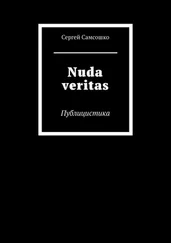Rita Monaldi - Veritas
Здесь есть возможность читать онлайн «Rita Monaldi - Veritas» весь текст электронной книги совершенно бесплатно (целиком полную версию без сокращений). В некоторых случаях можно слушать аудио, скачать через торрент в формате fb2 и присутствует краткое содержание. Жанр: Исторический детектив, на английском языке. Описание произведения, (предисловие) а так же отзывы посетителей доступны на портале библиотеки ЛибКат.
- Название:Veritas
- Автор:
- Жанр:
- Год:неизвестен
- ISBN:нет данных
- Рейтинг книги:3 / 5. Голосов: 1
-
Избранное:Добавить в избранное
- Отзывы:
-
Ваша оценка:
- 60
- 1
- 2
- 3
- 4
- 5
Veritas: краткое содержание, описание и аннотация
Предлагаем к чтению аннотацию, описание, краткое содержание или предисловие (зависит от того, что написал сам автор книги «Veritas»). Если вы не нашли необходимую информацию о книге — напишите в комментариях, мы постараемся отыскать её.
Veritas — читать онлайн бесплатно полную книгу (весь текст) целиком
Ниже представлен текст книги, разбитый по страницам. Система сохранения места последней прочитанной страницы, позволяет с удобством читать онлайн бесплатно книгу «Veritas», без необходимости каждый раз заново искать на чём Вы остановились. Поставьте закладку, и сможете в любой момент перейти на страницу, на которой закончили чтение.
Интервал:
Закладка:
As this book goes to press, the registered letter containing the application for the exhumation of the body of Joseph I, and a subsequent reminder, have received no answer from the Denkmalamt of Vienna.
The Flying Ship and its Inventor
The gazette of 24th June 1709 kept by Frosch reporting news of the arrival of the Flying Ship in Vienna is authentic. An example can be seen at the Vienna City and State Library. It is not the only eye-witness account of the Flying Ship: other gazettes reported the flight of the extraordinary device. The Diary of Vienna gazette of 1st June 1709 actually contains an engraving showing the Flying Ship ( Wiennerisches Diarium Nr. 609, 1–4 June 1709, pp. 1–2) and the item read by the chimney-sweep is taken word for word from the newspaper.
Modern historians know perfectly well who the inventor and helmsman of the Flying Ship was: not the mysterious violinist Albicastro, as the chimney-sweep supposes, but a Brazilian priest, as reported in the Wiennerisches Diarium , Bartolomeo Lorenzo de Gusmão (1685–1724). He was an extraordinary figure: a Jesuit, scientist, adventurer, inventor, possibly a charlatan, undoubtedly a genius, who has gone down in history as having perhaps flown not only the first airship but also the first aerostatic balloon, decades before the Montgolfier brothers.
The flight of his wooden ship (if it really happened) was reported all over Europe; in addition to the Viennese gazette, printed news sheets were issued in London and in Portugal.
Did the ship projected by Gusmão really take off? Opinons differ. The expert on the history of flying, Bernd Lukasch, does not rule out the idea at all. But according to the historian Fernando Reis, the Passarola (this is the name Gusmão gave it) was just a fable invented by Gusmão to draw the attention of detractors and inquisitive souls away from his real experiments, centred on hot-air balloons. And the gazettes? According to contemporaries, they were the work of Gusmão and a close friend, the Count of Penaguilão, who had set up the gigantic prank with the assistance of other friends. But this is not certain either. Gusmão’s life was shrouded in mystery up to the very end.
Between 1713 and 1716 the eccentric Brazilian travelled around Europe and made a name for himself with inventions of all kinds: a system of lenses for cooking meat by sunlight; a mill that ground much faster than any already existing; a machine for the exploration of peat bogs, and other unusual ideas. He settled in Paris where he earned a living first as a herbalist, and then, with the help of his brother, as secretary to the Portuguese ambassador to the Sun King. After returning to Portugal, thanks to his brilliant gifts as a scientist and orator he first became a member of the Royal Academy of History, and then acceded to the post of court chaplain. But then his troubles began: he was accused by the Inquisition of sympathising with the crypto-Jews. Furthermore, as Saramago records in his Memorial do Convento ( Baltasar and Blimunda ), he was involved in a scandalous trial, where the suspects included the King of Portugal, a brother of the Sovereign, their lovers, witches and prostitutes. Some suspect that behind the ecclesiastic authorities’ fury against Gusmão there lay hostility towards his aeronautical research. One of his brothers, perhaps to save him from the clutches of the Inquisition, declared that Gusmão was mad. To escape a possible conviction, the Jesuit secretly left Portugal and fled to Spain, trying to reach Paris. But in Toledo he was seized by a malignant fever and taken to hospital, where he died a month later, aged just thirty-nine. Even in these last moments he was not idle: just before dying he converted to Judaism. The truth about the Flying Ship is buried forever in Gusmão’s grave.
To conclude, one should not be surprised to discover, as reported in the gazette Frosch showed the chimney-sweep, that the pilot who came to Vienna on board his Flying Ship in 1709 was arrested and imprisoned, rather than borne in triumph as the first aviator in history. The Austrian soul loves tradition and distrusts anything new. Even at the beginning of the twentieth century, Emperor Franz Joseph was hostile to the introduction of electricity and lifts.
The experiments and theories of Francesco Lana, Ovidio Montalbani and Geminiano Montanari are taken from the texts they themselves published starting from the second half of the seventeenth century (see the bibliography).
Ciezeber-Palatine
From the recesses of history there emerges several times the mysterious figure of a dervish, as the chimney-sweep describes him. In a “flying sheet” (a sort of short gazette handed out in the streets) containing a report of the Turkish audience with Eugene ( Beschreibung Der Audientz des von tuerckischen Gross-Sultan nach Wien gesandten und alda ankommenden Cefulah Aga Capichi Pascia , Vienna, 9th April 1711) mention is made of an Indian dervish named Ciezeber in the ambassador’s retinue. In the account given by the chimney-sweep he will finally reveal himself under the name of Isaac Ammon, known as Palatine. Here again we are talking of a figure that really existed. And his political predictions on the future of Europe, formulated decades, even centuries ahead, have proved incredibly accurate. As already mentioned, reference is made to this extraordinary sorcerer figure, and his plots and prophecies, in the Mémoires du feld-maréchal comte de Mérode-Westerloo (Brussels 1840, vol.2, pp. 150-85 and 293). The author of these memoirs, which remained in manuscript form until the nineteenth century when they were published by a descendant, was a Belgian man-of-arms and diplomat, in the service of the Empire but often at odds with Eugene of Savoy. He gives a very unflattering portrait of Eugene, thus earning himself the displeasure of modern historians (see, for example, H. Oehler, Prinz Eugen im Urteil Europas , Munich 1944, pp. 369-75). Palatine (his name was in fact Isaac Ammon, as the chimney-sweep records), despite being the eldest son of an important family of Nestorian patriarchs, was close to the circle of dervishes in Babylon ( Mémoires , p. 159–160). An expert healer and connoisseur of poisons, he successfully cured de Mérode himself of a serious illness. De Mérode remained close to him for eight years, and recorded his prognostication of the secret poisonings of numerous personalities: Louis XIV, the Dauphin, the Duke and Duchess of Bourgogne and their son, and also the Duke of Berry, the King of Spain Charles II and above all Joseph I. With regard to this last named, Palatine speaks of an “Emperor”, but there is no doubt that it was Joseph because De Mérode-Westerloo dates his acquaintance and conversations with Palatine (p. 150 and 160-61) around 1708, when Joseph I was Emperor. Palatine was also in touch with Eugene of Savoy: De Mérode-Westerloo recounts (p. 293) that he heard with some concern, in 1722, several years after losing touch with him, that the strange character held talks with Eugene and gathered information about him.
Palatine’s uncannily accurate predictions of death include the following: that of the Sun King (who in 1714, three years after Palatine’s pronouncement, would indeed die of gangrene in the leg, as forecast by the dervish in the chimney-sweep’s tale and in De Mérode-Westerloo’s memoirs); that of the Duke of Berry, who died in May 1714 (grandson of Louis XIV and third son of the Grand Dauphin, the Duke died of an illness, as predicted by the dervish); that of the Grand Dauphin himself, who expired on 14th April 1711, just three days before Joseph; and finally those of the Duke and Duchess of Bourgogne in 1712: an incredible series of deaths that historians have termed “the hecatomb”.
Читать дальшеИнтервал:
Закладка:
Похожие книги на «Veritas»
Представляем Вашему вниманию похожие книги на «Veritas» списком для выбора. Мы отобрали схожую по названию и смыслу литературу в надежде предоставить читателям больше вариантов отыскать новые, интересные, ещё непрочитанные произведения.
Обсуждение, отзывы о книге «Veritas» и просто собственные мнения читателей. Оставьте ваши комментарии, напишите, что Вы думаете о произведении, его смысле или главных героях. Укажите что конкретно понравилось, а что нет, и почему Вы так считаете.











